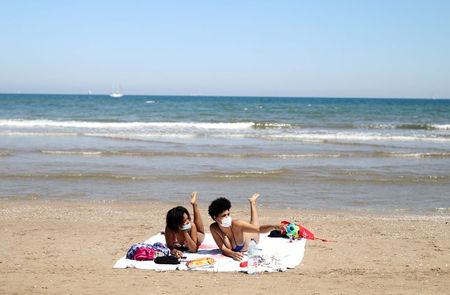By Nathan Allen
MADRID (Reuters) – A comprehensive study of coronavirus antibodies present in the Spanish population will help the government decide which regions need most assistance, and pave the way for future research, Science Minister Pedro Duque told Reuters in an interview.
Preliminary results from the study of 60,000 people across the country suggested roughly 5% of the population had been affected by the virus, far less than required to build up herd immunity to inhibit the virus’s free circulation within the population.
“One thing all governments are having trouble with is the absence of accurate data to take policy decisions,” Duque said. “This is the first time we have population-wide, accurate data.”
One of Europe’s worst affected countries, Spain has reported 231,606 confirmed cases of the virus and 27,709 deaths, though a strict lockdown has helped rein in its spiralling infection rate.
On Monday the project entered the second of its three phases, testing the same sample of people again, aiming to give researchers a greater insight into how the prevalence of antibodies shifts over time and the potential for reinfection.
But the government has already begun to analyse the data to establish which regions are struggling the most and may be more susceptible to a second wave of infection.
“We may need to reinforce the system in some areas that have shown they are weaker,” Duque said. “The work starts now.”
A former astronaut with a background in engineering, Duque said the results vindicated the government’s cautious approach to lifting its 10-week lockdown, with different parts of the country progressing at different speeds.
“People were guessing that we should be opening everything at the same time, assuming everyone has already had (the virus)one way or another. That has been proven wrong.”
However, the minister was unwilling to speculate on the causes behind some of the study’s more surprising findings, such as the sparsely populated provinces of Cuenca and Soria registering the highest occurrence of antibodies.
Further research will also be needed into the sharp variation in mortality rates across the country, he said. In the small wine-growing region of La Rioja, more than 3% of infected people died from the virus, while for some provinces of Andalusia the figure was less than 1%.
“This is what happens in science. Every time you do an experiment you get many more questions than answers.”
(Reporting by Nathan Allen; Editing by Nick Macfie)



